Sterkfontein caves turns 80 and some more recent archaeological ruins
For all you archaeology buffs out there here is a great one for you if you can make it.
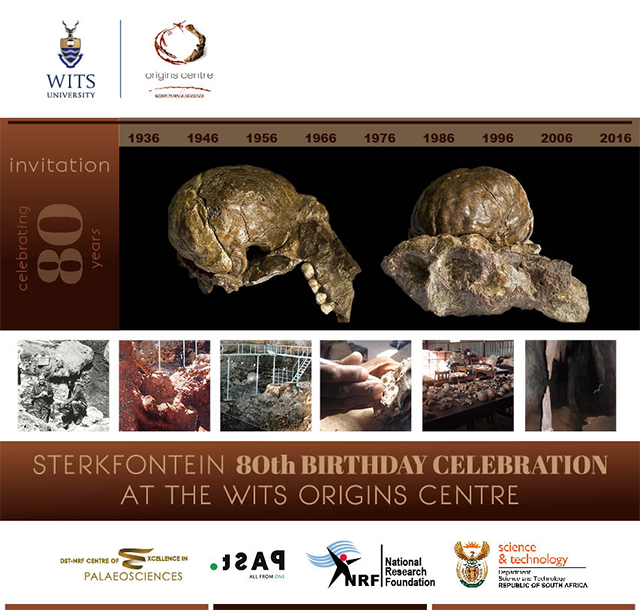
you can find the details here:
TO SEE:
Original fossil of first adult Australopithecus ever found
Original fossil of Mrs Ples
Numerous other important original fossils found at Sterkfontein in the last 80 years
Examples of fossils still encased in breccia, and opportunity to interact with fossil preparators who painstakingly extract them from the rock
Original Early Stone Age tools - oldest stone tools in South Africa, found at Sterkfontein
TO HEAR:
Short talks from top Wits Professors, all experts in their fields of research
Professor Ron Clarke: World renowned expert on hominins and human evolution. Responsible for spectacular find at Sterkfontein of nearly 3 million year old, virtually complete Australopithecus fossil, nicknamed ‘Little Foot'.
Professor Francis Thackeray: Philip Tobias chair in palaeoanthropology, expert on hominin evolution and climatic change, previous Director of Ditsong Museum of Natural History, from 1991 until 2009.
Professor Rob Blumenschine: Emeritus Professor of Anthropology at Rutgers University and has co-led palaeo-anthropological research at Olduvai Gorge in Tanzania since 1987.
Professor Amanda Esterhuysen: Archaeology, Palaeo-ecology and education. Author of Sterkfontein: Early Hominid site in the ‘Cradle of Humankind', exciting guidebook to the site.
Professor Bruce Rubidge: Palaeontologist with a special interest in ancient mammal-like reptiles from the Karoo. Director of the Evolutionary Sciences Institute, home to the largest fossil collection in South Africa.
And a little extra from my side:
Some pictures of archaeological sites close to where I grew up… we have a couple on that farm but they are not as photogenic.
These date from South Africa’s Iron Age. Roughly 500 -150 years old. The ones photographed here are most likely from the 1700’s.
Amongst the long grass to the casual observer they just appear as piles of stones. But after walking around a bit the outlines of cattle pens, homesteads and other demarcations can be discerned.
There are hundreds littered along the ridges around where I grew up… some are better preserved. Below are some pictures of a particularly good one.
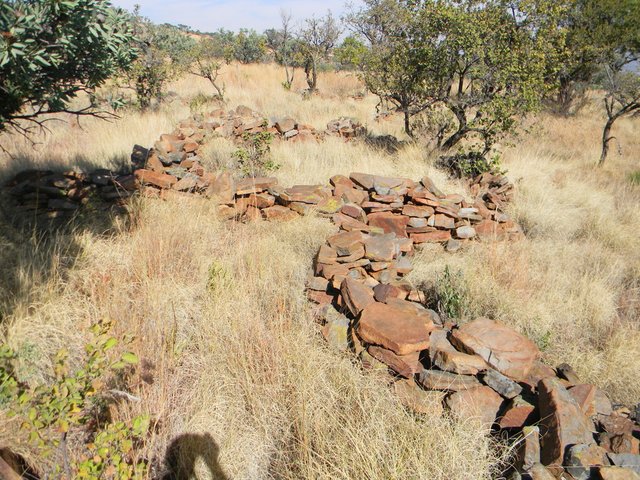
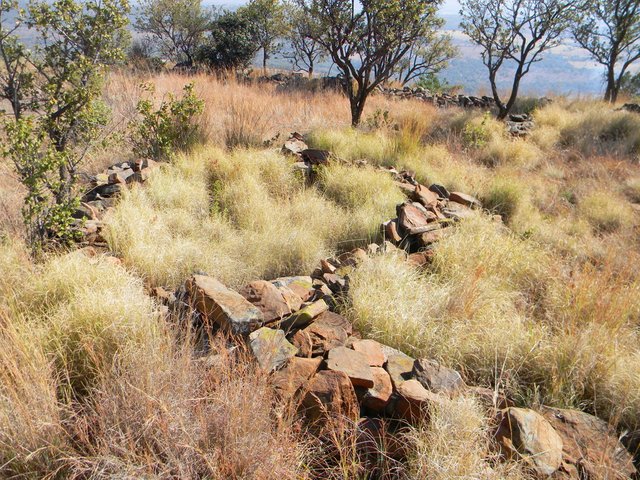
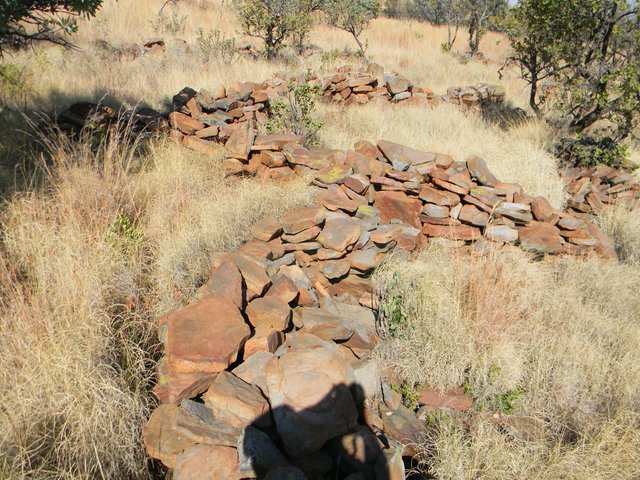
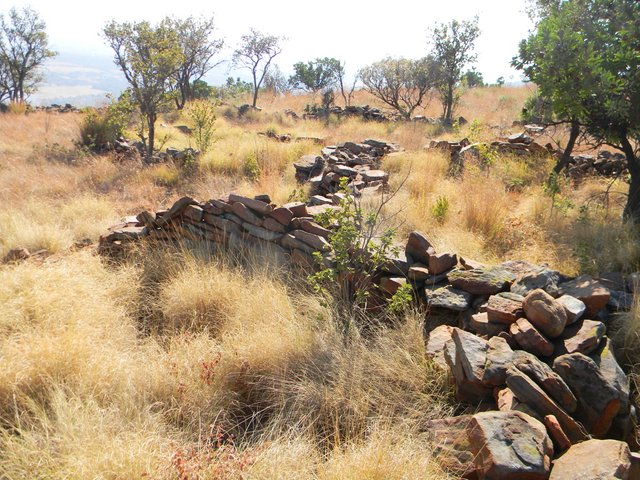
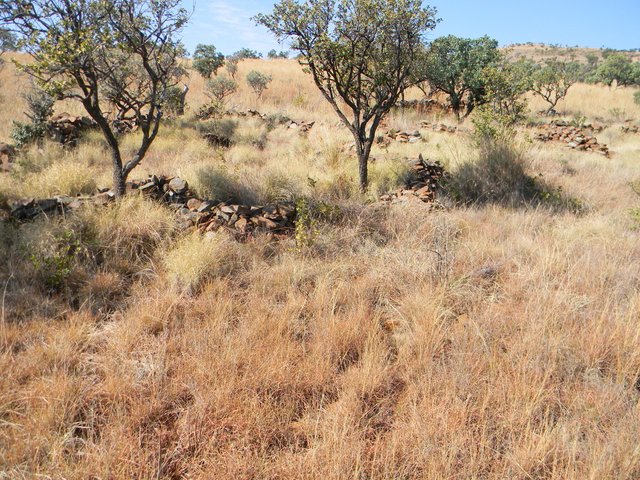
After a fire a couple of months later things look like this:
Locals still use these ruins in ancestral worship rituals. Below are the remains of one such offering; a few coins, water, tobacco… in the form of snuff (sniffing tobacco)
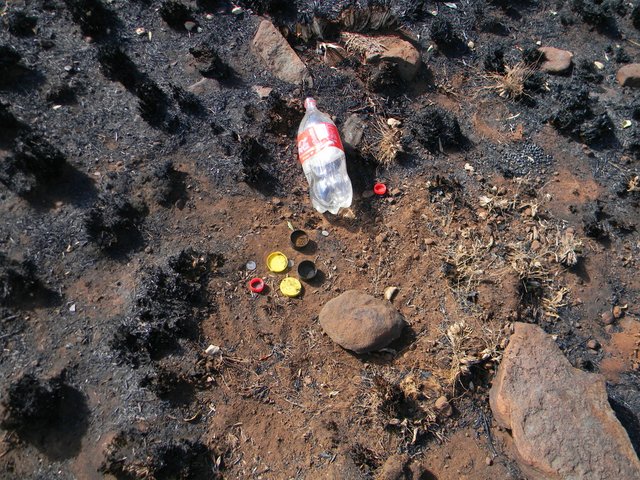
Here one can nicely see that in its day it consisted of nicely packed stones. Where the stones are naturally flat the stonework has lasted longer due to better packing and stability.
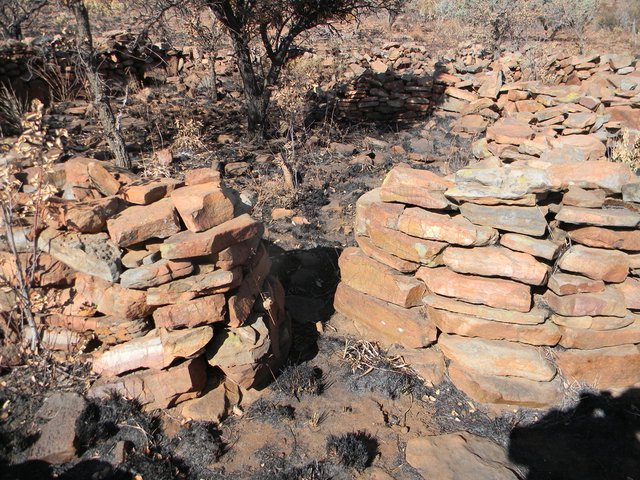
Baboons gradually dismantling the walls and dispersing the rocks over time as they look for critters to eat. Note the overturned rock in the foreground.
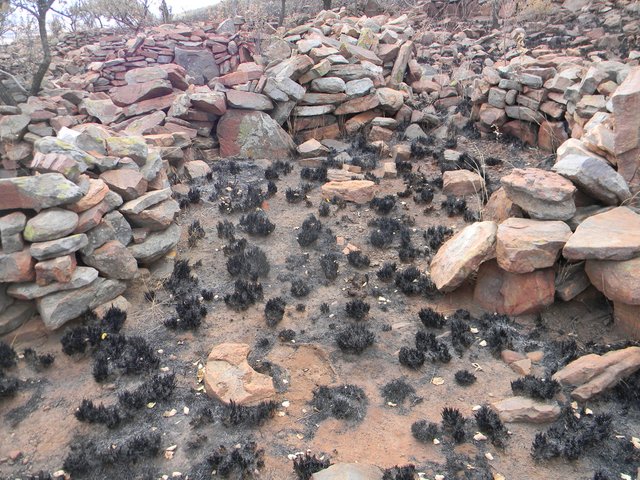
Some fantastic piece of knowledge shared here, thanks a bunch! Namaste :)
Nice write up. went there when i waa younger!
Pretty neat!! Thanks for sharing!!...now following ;)
I really need to make a plan to go see it soon. I am not to far away, and has never made the effort to go and visit.
Take the kids or friends... take pictures... share on steemit.... I know I will be.
My first re-blog :). I used to work like archaeologist 15 years ago :) very nice article.
You stirred my curiosity! I will definitely try to visit this cave next December!
It's worth the trip.
Amazing post!
Get to know the past to understand the present!